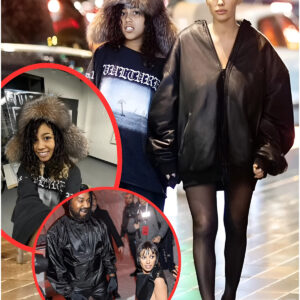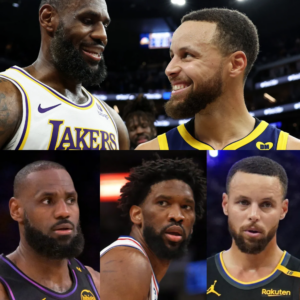Killers of the Flower Moon and who gets to tell an Osage story
For Indigenous people, there are few simple feelings about Scorsese’s take on the Reign of Terror.
/cdn.vox-cdn.com/uploads/chorus_image/image/72833422/Killers_Of_The_Flower_Moon_Photo_0104.0.jpg)
Actor Lily Gladstone and director Martin Scorsese on the set of Killers of the Flower Moon.
Growing up, Welana Queton never talked about the Reign of Terror with outsiders. As a young girl, Queton learned about the protracted murder spree which saw the deaths of more than 60 Osage Natives between 1918 and 1931, but she says the murders were “only talked about amongst your immediate family; it never was talked about outside of those circles.” Now, in 2023, the story is being told on the widest stage possible with some of the biggest names in Hollywood.
Queton is one of many Osage citizens who worked as an extra on Killers of the Flower Moon. The movie raises questions about who can tell a story like this, but that doesn’t mean it’s equipped to answer them. I can imagine, for Osage people, it must feel good to have their story on film. I can imagine if someone were to make a movie about my great-great-grandfather Quanah Parker, a well-known warrior and leader of one of my tribes, the Comanches, that I’d be at least interested in seeing how that story was portrayed. I could understand how one might want the story to come out simply because it hadn’t been acknowledged for far too long.
But I’d be interested, too, in who was telling that story. As an Indigenous writer and filmmaker, I’d rather be the one to make it. In a time when Indigenous film and TV exists, when a show like Reservation Dogs flourishes, when the template of Indigenous creation and excellence has been achieved, the question I ask is: Why do we need another writer/director from outside of our communities to tell our stories, yet again?
:no_upscale()/cdn.vox-cdn.com/uploads/chorus_asset/file/25056325/Killers_Of_The_Flower_Moon_Photo_0105.jpg)
From left to right, JaNae Collins, Lily Gladstone, Cara Jade Myers, and Jillian Dion in Killers of the Flower Moon.
Martin Scorsese has tried in seemingly every way to make Killers of the Flower Moon as sincerely and correctly as possible. He’s employed Osage people to work behind the scenes and consulted with them to ensure sensitivity and authenticity. He’s gone as far as to rework his original script to make amends for the lack of Osage centeredness.
Sitting in a Santa Fe, New Mexico, cinema on a Friday afternoon, I watched as Scorsese (on screen) earnestly introduced his latest film, and wondered how far that intention would take us. I was surrounded by elderly anglo cineastes. As the film progressed, I heard crying from the crowd, the blowing of noses, the shock of how brutally humans can treat one another — how, in this case, the white interlopers treated the Osage. In the dark of the cinema, I heard the disgust of these descendants of colonialism, angry at their own ancestors.
But what would happen later? Would they go home to large, fancy Santa Fe houses, acquired through years of generational wealth? After they finished decrying America’s horrible past, would they drain their glasses of pinot noir and just move on? Would they remember the whole thing as a Martin Scorsese movie starring Robert De Niro and Leonardo DiCaprio, and let the particulars of Osage genocide and generational pain fall from their minds?
Killers of the Flower Moon, the story of how white people murdered Osages in the 1920s for their oil-rich lands, adapted from David Grann’s book, means well. The performances are great — which is to be expected when you have such a standout cast. Lily Gladstone continues her phenomenal year after a pivotal role in Reservation Dogs and as the lead in the independent films Fancy Dance and The Unknown Country.
Gladstone conveys a quiet grace as Mollie Burkhart, the heart and soul of the film, who slowly fades away, literally and figuratively; by the third act, she is mostly sweating, vomiting, and dying, a figure without agency, as the white people maneuver around her doing terrible deeds. DiCaprio brings a yeoman-like quality to his performance as Ernest Burkhart, the man who arrives in Osage country with designs on acquiring the abundant wealth it holds.
He grunts, furrows his brow, and plays Burkhart — a man whose oft-repeated refrain is, “I love money!” — as simply as needed. De Niro is so adept at playing crooks at this point in his long and incredible career that one need not be surprised at how well he settles into the role of Burkhart’s uncle, the self-proclaimed “King of the Osage Hills,” William Hale.
When Jesse Plemons arrives on screen as Bureau of Investigation agent Tom White, it’s refreshing. His is a face that can be so blank you can project just about any type of emotion onto it. By the time we see him, there has been so much death and betrayal of the Osage people that his very existence is a welcome respite.
Osage citizen Susan Shannon remembers shooting her background scenes in June of 2021 in Pawhuska, Oklahoma. “It was just fascinating to see big-time movie making. It transformed our little town, cameras and cranes.” Like Welana Queton, she remembers being told as a kid not to disclose too much to outsiders about the Osage murders or her oil profits, known as headrights. Born in 1954, she was closer to the Osage murders than Queton, and her family was guarded about the topic more out of fear for their lives than anything else.
Shannon recalls talking with visitors to the Osage museum where she worked before retiring, discussing Osage history with visitors: “It is funny that you talk about these things and all of a sudden you’re overwhelmed.”
She wasn’t a fan of Grann’s book at first, “I didn’t care for how it was written. It’s written by a white man from a white man’s point of view.” She does, however, recognize the amount of research Grann put into the book — “I had to respect that.”
“This is going to hit women differently,” Queton told me. “It has to do with trauma to women, Osage women specifically.” The subject matter was familiar to Osage people, of course, but how to discuss the murders has never been agreed upon. “It was a very taboo thing to discuss. It’s never been discussed as a community, outside of your family. It is very strange that this is being exposed, it’s a very strange feeling.”
Queton believes it is a step in a positive direction. “I do think the wounds are going to be exposed, that historical trauma,” she says. “I think it’s a good thing for other Native people too, not just us.” After seeing the film, Queton recalls wailing unexpectedly from all of the unprocessed trauma, years of pent-up sadness overwhelming her.
Killers of the Flower Moon is a long film — too long, really, clocking in at just slightly under three and a half hours — mostly because it has a lot to say, but also maybe because there’s too much to say. Perhaps it’s so long because these are not the people who should be saying it.
Scorsese truly tried, but the reality is this is yet another film about Indigenous people, in this case, the Osage, written and directed by white people and adapted from a book written by a white man. His attempts to reframe the story are admirable, but the creators of the film can only center Osages so much, they themselves not being Osage.
Besides that, Scorsese has always been drawn to gangsters and gangsterism. There’s nothing wrong with that. However, they are the main perpetrators of the carnage in Osage County, and while respect is being paid to the Osage in telling this story, it doesn’t feel like enough. It feels as though the individuals and their deaths are used to serve the story, as a way to get DiCaprio to the next scene.
After watching Killers, it seems evident to me that non-Indigenous writers and directors making films about Indigenous people are still primarily interested in our past, in our horrors, in our grieving, in our trauma, in perhaps the collective need to mourn. When I say collective, though, I wonder if it’s more of a need for them than us.
I wonder why we can’t do this on our own terms and make films about our own histories. Perhaps after we create more cool genre films (see Blood Quantum and Night Raiders) and build toward a better cinematic infrastructure, we could get the chance to tell these stories ourselves. Why can’t white people stay out of it and let us, as Indigenous people, work up to this on our own timeline? Spoiler alert: It’s the money. We don’t have it, they do.
:no_upscale()/cdn.vox-cdn.com/uploads/chorus_asset/file/25056336/Killers_Of_The_Flower_Moon_Photo_0109.jpg)
Lily Gladstone as Mollie Burkhart (fifth from left) with her family on her wedding day.
Osage artist and graphic designer Addie Roanhorse had a number of roles in the making of the film, including as film ambassador for the Osage Nation and then in the art, props, and costume departments. She was eventually offered an acting part in the film but turned it down — an artist herself, Roanhorse had already committed to the art department and wanted to keep her word.
She was then asked to design a number of gorgeous film posters for Killers of the Flower Moon. The project has been a blessing of opportunities for Roanhorse, but it is also a mixed bag of feelings for her. She went into the process thinking she was fine, she was good, “and then it’s just these emotions just keep hitting me.
It’s like I’m so happy, but I’m so gut-wrenched too. Just like, you feel so raw right now.” She has gone on to work on more sets since Killers wrapped. She’s found a place in the film industry and more opportunities, but it came at a cost.
Near the end of the film, Scorsese inserts himself. It’s as if he is trying his hardest, his damndest, to shape the film and story as best he can into something, in case you didn’t catch his sincerity the first time around. It’s impossible, though, because he’s not of the people the film is purportedly about.
Many have praised the penultimate scene in the film. I thought it was an exercise in buffoonery — one that changes the tone of the film considerably and leaves me thinking I simply must have missed something in the three hours and 26 minutes of story where this would have made sense. But I don’t think so. I’ll have to watch it again.
Scorsese wants us to know he did the work, and that’s basically true. You can do all of that, though, you can do all the things: get all the permissions, have the best intentions, tell as much of the story as you possibly can, but in the end, you still have to make a good film.
And besides making a good film, there remains a group of people who must process their emotions and work through what Killers of the Flower Moon means to them, people like Addie Roanhorse: “It’s finally out, so after working on the film for seven years, getting to this point, I don’t really know how to feel. I’ve been circling my house a little bit, just processing.”
News
Test đẩy bài từ cms
Test đẩy bài từ cms, xóa sau khi dùng.
Kanye West’s wife Bianca Censori COVERS UP while playing stepmother to his daughter North – amid rumors Kim Kardashian ‘demanded’ she dress demurely around the kids – TH
Kanye West’s wife Bianca Censori COVERS UP while playing stepmother to his daughter North – amid rumors Kim Kardashian ‘demanded’ she dress demurely around the kids Kanye…
Gordon Ramsay reveals he has arthritis and just had knee surgery – but insists he’s ‘not f***ed yet’ – TH
Gordon Ramsay reveals he has arthritis and just had knee surgery – but insists he’s ‘not f***ed yet’ HE is the super-fit, marathon-running and Ironman-completing chef who…
“It’s an island and nobody’s looking at me”: Fame Destroyed Johnny Depp’s Life So Badly He Has to Go to a Private Island to Feel ‘Normal’ – TH
“It’s an island and nobody’s looking at me”: Fame Destroyed Johnny Depp’s Life So Badly He Has to Go to a Private Island to Feel ‘Normal’ Johnny…
“They’re all about seeing the girls”: Leonardo DiCaprio and Tobey Maguire’s Inappropriate Group Almost Jeopardized Their Reputation – TH
“They’re all about seeing the girls”: Leonardo DiCaprio and Tobey Maguire’s Inappropriate Group Almost Jeopardized Their Reputation Leonardo DiCaprio and Tobey Maguire’s reputation was almost stained during…
Kim Kardashian is blasted over clip of son Saint, 8, walking out with Lionel Messi ahead of Inter Miami’s tie against LA Galaxy instead of a ‘less fortunate kid’: ‘What money can buy’ – TH
Kim Kardashian is blasted over clip of son Saint, 8, walking out with Lionel Messi ahead of Inter Miami’s tie against LA Galaxy instead of a ‘less…
End of content
No more pages to load










